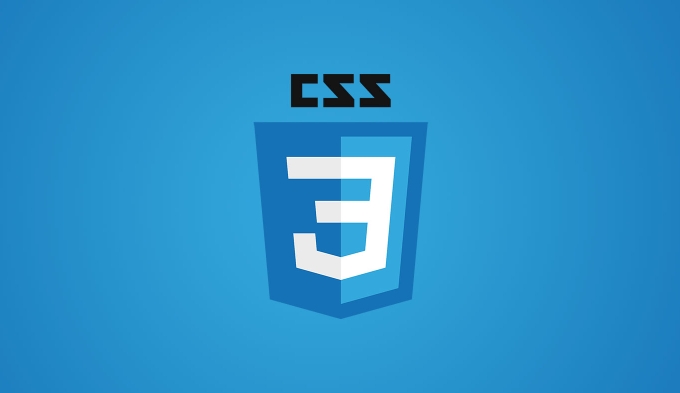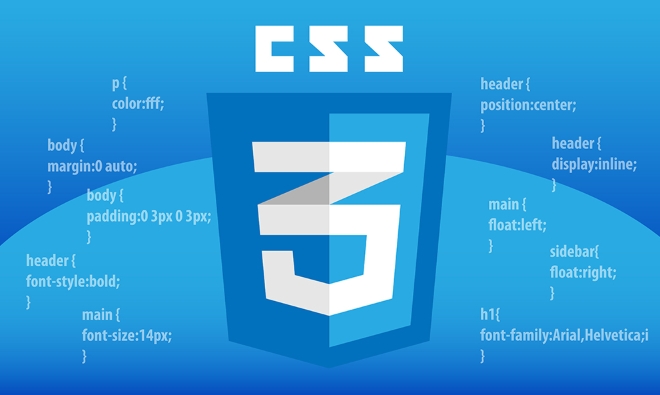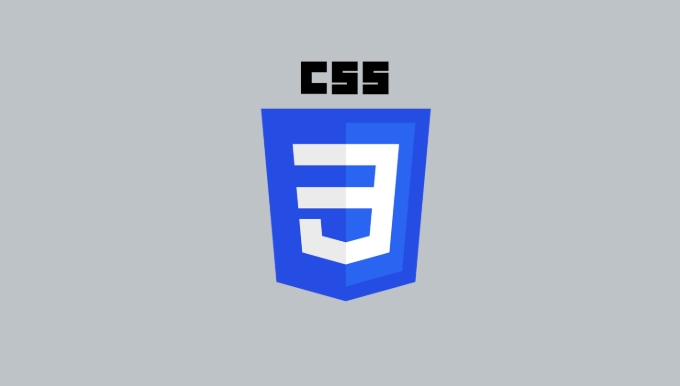To write responsive CSS media queries, the key is to set breakpoints around the content and adopt a mobile-first strategy. 1. You should not blindly use common breakpoints such as 768px and 992px, but should decide the breakpoints based on when the content layout becomes crowded; 2. It is recommended to adopt the mobile priority principle, first define the mobile style, and then adapt it up through min-width to avoid loading unnecessary resources; 3. Media queries are not limited to screen width, but can also be judged based on characteristics such as resolution, horizontal and vertical screens, dark modes, etc., but excessive complexity should be avoided; 4. In practice, the number of breakpoints should be controlled to be within 3 to 5, unified naming of variables is convenient for collaboration, and it is necessary to test on real devices; 5. Finally, don’t forget to add a viewport meta tag to HTML to ensure that media queries take effect on the mobile side.

The key to writing responsive CSS media queries is to understand the logic of layout changes and the actual performance of device characteristics. Don’t just stack breakpoints, but design them around the content itself.

Why not all devices use 768px and 992px?
Many people copy and paste common breakpoints as soon as they come up: for example, the numbers 768, 992, and 1200. But these values ??are actually just a rough correspondence between "tablets" and "desktops" and are not necessarily suitable for your content.

For example, you have a paragraph of text on your page, and the two columns are laid out on the small screen and it will appear crowded. At this time, you should decide when to change the layout based on the comfort of the content itself , rather than depending on the size of the equipment.
- You might as well narrow the window in your browser first to see which width you are typing begins to become ugly
- That point is where you should add media inquiries
The advantage of this is that even if new devices appear, the style will not be messed up as long as the content is properly adapted.

Mobile or desktop first? Choose the right direction and achieve twice the result with half the effort
The mainstream approach now is to "mobile first", that is, write the mobile style first, and then enhance the experience on a larger screen. This is in line with the trend of access to most websites and is easier to control load performance.
If you start from the desktop, you may accidentally load a bunch of styles or images to the phone user that you don't need at all.
It is also very simple to use:
- The default style is written on the mobile terminal
- Add larger screen adaptations with
min-width - Try to avoid
max-widthnesting too many layers (it is easy to be confused)
For example:
/* Default mobile style*/
.container {
padding: 10px;
}
/* Adjust on medium screen*/
@media (min-width: 768px) {
.container {
padding: 20px;
}
}Media queries are not just width, but also these can be used
In addition to screen width, you can also detect other features:
Resolution : High DPI screens can use clearer pictures
@media (min-resolution: 2dppx)
Horizontal and vertical screen switching : optimized for mobile phone rotation
@media (orientation: landscape)
Dark Mode Support : Provides adaptation for dark themes
@media (prefers-color-scheme: dark)
These conditions can be used in combination, but be careful not to be too complicated. One suggestion is: introduce these extra judgments only when they are really needed.
Tips for writing media inquiries, don't ignore these details
- Don't break points frequently : It's enough to have 3 to 5 main break points for a project, too many will be difficult to maintain.
- The naming should be unified : for example, use
$sm,$md, and$lgto manage variables to facilitate teamwork - Testing must be performed on real devices : Sometimes the simulator shows no problem, but the real machine makes an error
- Avoid duplicate code : You can define common styles outside media queries to reduce redundancy
Also, remember to add the viewport meta tag in <head> of HTML:
<meta name="viewport" content="width=device-width, initial-scale=1">
Without this, many media queries will not take effect on mobile phones.
Basically, it is not complicated to write media queries, but it is easy to ignore content priority and breakpoint rationality. Set breakpoints naturally according to the content stream and cooperate with the mobile-first strategy to make a stable and flexible responsive design.
The above is the detailed content of Writing effective media queries for responsive css design. For more information, please follow other related articles on the PHP Chinese website!

Hot AI Tools

Undress AI Tool
Undress images for free

Undresser.AI Undress
AI-powered app for creating realistic nude photos

AI Clothes Remover
Online AI tool for removing clothes from photos.

Clothoff.io
AI clothes remover

Video Face Swap
Swap faces in any video effortlessly with our completely free AI face swap tool!

Hot Article

Hot Tools

Notepad++7.3.1
Easy-to-use and free code editor

SublimeText3 Chinese version
Chinese version, very easy to use

Zend Studio 13.0.1
Powerful PHP integrated development environment

Dreamweaver CS6
Visual web development tools

SublimeText3 Mac version
God-level code editing software (SublimeText3)

Hot Topics
 CSS tutorial for creating loading spinners and animations
Jul 07, 2025 am 12:07 AM
CSS tutorial for creating loading spinners and animations
Jul 07, 2025 am 12:07 AM
There are three ways to create a CSS loading rotator: 1. Use the basic rotator of borders to achieve simple animation through HTML and CSS; 2. Use a custom rotator of multiple points to achieve the jump effect through different delay times; 3. Add a rotator in the button and switch classes through JavaScript to display the loading status. Each approach emphasizes the importance of design details such as color, size, accessibility and performance optimization to enhance the user experience.
 Addressing CSS Browser Compatibility issues and prefixes
Jul 07, 2025 am 01:44 AM
Addressing CSS Browser Compatibility issues and prefixes
Jul 07, 2025 am 01:44 AM
To deal with CSS browser compatibility and prefix issues, you need to understand the differences in browser support and use vendor prefixes reasonably. 1. Understand common problems such as Flexbox and Grid support, position:sticky invalid, and animation performance is different; 2. Check CanIuse confirmation feature support status; 3. Correctly use -webkit-, -moz-, -ms-, -o- and other manufacturer prefixes; 4. It is recommended to use Autoprefixer to automatically add prefixes; 5. Install PostCSS and configure browserslist to specify the target browser; 6. Automatically handle compatibility during construction; 7. Modernizr detection features can be used for old projects; 8. No need to pursue consistency of all browsers,
 What is the difference between display: inline, display: block, and display: inline-block?
Jul 11, 2025 am 03:25 AM
What is the difference between display: inline, display: block, and display: inline-block?
Jul 11, 2025 am 03:25 AM
Themaindifferencesbetweendisplay:inline,block,andinline-blockinHTML/CSSarelayoutbehavior,spaceusage,andstylingcontrol.1.Inlineelementsflowwithtext,don’tstartonnewlines,ignorewidth/height,andonlyapplyhorizontalpadding/margins—idealforinlinetextstyling
 Styling visited links differently with CSS
Jul 11, 2025 am 03:26 AM
Styling visited links differently with CSS
Jul 11, 2025 am 03:26 AM
Setting the style of links you have visited can improve the user experience, especially in content-intensive websites to help users navigate better. 1. Use CSS's: visited pseudo-class to define the style of the visited link, such as color changes; 2. Note that the browser only allows modification of some attributes due to privacy restrictions; 3. The color selection should be coordinated with the overall style to avoid abruptness; 4. The mobile terminal may not display this effect, and it is recommended to combine it with other visual prompts such as icon auxiliary logos.
 Creating custom shapes with css clip-path
Jul 09, 2025 am 01:29 AM
Creating custom shapes with css clip-path
Jul 09, 2025 am 01:29 AM
Use the clip-path attribute of CSS to crop elements into custom shapes, such as triangles, circular notches, polygons, etc., without relying on pictures or SVGs. Its advantages include: 1. Supports a variety of basic shapes such as circle, ellipse, polygon, etc.; 2. Responsive adjustment and adaptable to mobile terminals; 3. Easy to animation, and can be combined with hover or JavaScript to achieve dynamic effects; 4. It does not affect the layout flow, and only crops the display area. Common usages are such as circular clip-path:circle (50pxatcenter) and triangle clip-path:polygon (50%0%, 100 0%, 0 0%). Notice
 What is the CSS Painting API?
Jul 04, 2025 am 02:16 AM
What is the CSS Painting API?
Jul 04, 2025 am 02:16 AM
TheCSSPaintingAPIenablesdynamicimagegenerationinCSSusingJavaScript.1.DeveloperscreateaPaintWorkletclasswithapaint()method.2.TheyregisteritviaregisterPaint().3.ThecustompaintfunctionisthenusedinCSSpropertieslikebackground-image.Thisallowsfordynamicvis
 How to create responsive images using CSS?
Jul 15, 2025 am 01:10 AM
How to create responsive images using CSS?
Jul 15, 2025 am 01:10 AM
To create responsive images using CSS, it can be mainly achieved through the following methods: 1. Use max-width:100% and height:auto to allow the image to adapt to the container width while maintaining the proportion; 2. Use HTML's srcset and sizes attributes to intelligently load the image sources adapted to different screens; 3. Use object-fit and object-position to control image cropping and focus display. Together, these methods ensure that the images are presented clearly and beautifully on different devices.
 What are common CSS browser inconsistencies?
Jul 26, 2025 am 07:04 AM
What are common CSS browser inconsistencies?
Jul 26, 2025 am 07:04 AM
Different browsers have differences in CSS parsing, resulting in inconsistent display effects, mainly including the default style difference, box model calculation method, Flexbox and Grid layout support level, and inconsistent behavior of certain CSS attributes. 1. The default style processing is inconsistent. The solution is to use CSSReset or Normalize.css to unify the initial style; 2. The box model calculation method of the old version of IE is different. It is recommended to use box-sizing:border-box in a unified manner; 3. Flexbox and Grid perform differently in edge cases or in old versions. More tests and use Autoprefixer; 4. Some CSS attribute behaviors are inconsistent. CanIuse must be consulted and downgraded.






